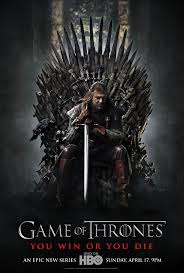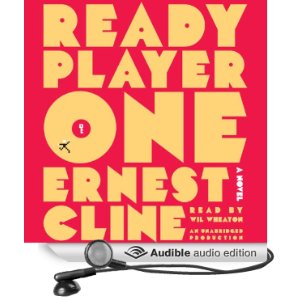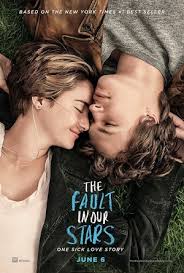Allow me to interrupt our normal podcast posts with a short blog post about George Martin and why he’s awesome.
George R.R. Martin (GRRM) did an impressive job with the writing of his Song of Ice and Fire series, to such an extent that it inspired the hit HBO series Game of Thrones and was the reason I started writing. Okay, the HBO series may be more impressive, but I imagine there are many other writers out there that started because of GRRM and who would love to spend some time analyzing his writing – and that will be our goal in this series of posts (if it evolves into a series… Also, check out my youtube channel where I talk about why I love Game of Thrones and how it inspired my fantasy book).
I read A Game of Thrones and the other three books in the series before A Dance with Dragons came out, and on one stormy day in D.C. decided that instead of waiting for the next novel in a series I loved to come out, I would create my own series. Sitting down with the goal to write a novel by my 50th birthday, I soon found that I loved to write. Within six months my story reached the 100,000 word mark, and from then on there was no stopping me.
But our focus here is on GRRM’s work and what makes it so amazing. As this is part 1, today’s post will discuss the prologue in A Game of Thrones.
A Game of Thrones – Prologue
One of the many fun aspects of GRRM’s work is that it inspires people in different ways. For me it was the characters and the story, which I thought would have been much better without the magic, but in my interview with author Will Wight (The Travelers Gate trilogy), he said that he wrote because he wanted more stories like GRRM’s but with more magic. Regardless of where you stand on the more magic or less magic camp, you have to agree that GRRM did a wonderful job of setting up the magic in his book by introducing it into the prologue. The following chapters have little-to-no magic, so introducing it here helps establish the world and expectations so that when magic comes into play later in the story, it doesn’t completely catch anyone off guard.
So how does GRRM set it up? He takes us into the world of the Night’s Watch. We are with three rangers of various levels of experience as they track Wildings north of the wall (I’ve already resigned myself to not explain every detail, so if something I say confuses you, look it up online or read the books). He starts with the amazing paragraph:
“We should start back,” Gared urged as the woods began to grow dark around them. “The Wildings are dead.”
How perfect this is! The truth is there – the wildings are dead (spoiler alert – they come back from the dead and kill two of the three rangers). And even bigger than that, a main issue in the book is the wildings trying to get south of the wall, because if they stay north they will surely die. One last piece of genius there is the part about the woods growing dark around them – as we all know, “Winter is Coming,” and this seems a possible setup to that already in the first paragraph (and with Winter comes darkness, some say the last Winter brought darkness to the extent that men were born and lived full lives without ever seeing the light of the sun). Maybe I am reading too much into the words here, but Blake Snyder in his Save the Cat book talks about a contrasting opening and closing image to your book, and I would like to believe GRRM put that level of thought into these early words of A Game of Thrones. If I’m overthinking it, I don’t care. Isn’t it always more fun that way?
Characters:
The following three characters occupy the prologue:
Gared: And old man, past fifty. He had spent forty years in the Night’s Watch.
Will: Four years on the wall, but he’s done a hundred rangings already.
Ser Waymar Royce: The lord recently arrived at the Wall. He’s the babe of the group at eighteen.
I point them out simply for a reference point. GRRM always puts a lot of thought into his characters, even the ones that are not main characters. He gives details of Gared’s loss of his ears and finger, which is relevant because (spoiler again) in Chapter 1 we see Bran watch this man get his head chopped off for desertion of the Night’s Watch, but never refer to him by name. This happens because in Chapter 1 we are in Bran’s point of view (POV) at that point, so we wouldn’t know the man’s name, but more of that in our next GRRM post. For now it’s enough to point out that, like all modern great authors, GRRM uses a third-person close in POV, meaning he does not show anything his POV character wouldn’t observe or think. Yes, he switches characters in his chapters, but never within a chapter. We are never yanked from one woman’s thoughts into someone else’s, and we aren’t shown anything she wouldn’t see with her own eyes (COMMENTS: If you catch any slips in this regard, I’d love to see them in the comments section).
The characters are also a great introduction to GRRM’s world and class structure, with Gared and his fancy clothes on his ‘huge black destrier,’ while the other two ride ‘smaller garrons.’
But what I love almost equal to the characters of GRRM’s work and will harp on over and over, is his prose. This is especially true in Chapter 1, but for now I will point to the following section from the prologue (our first description of a White Walker or Other:
“A shadow emerged from the dark of the wood. It stood in front of Royce. Tall it was, and gaunt and hard as old bones, with flesh pale as milk. Its armor seemed to change color as it moved; here it was white as new-fallen snow, there black as shadow, everywhere dappled with deep grey-green of the trees. The patterns ran like moonlight on water with every step it took.”
Now doesn’t that sound so much more mystical and grand than the zombie things we see on the show? The show is amazing and I can’t wait to see what happens, but this description is awe inspiring.
How the Book Prologue Compares to the TV Show
The show starts with the rangers leaving, so we get to see the ice tunnel, and then they separate so we are with just one of them, to give us a sense of suspense. Then he finds a bunch of mutilated bodies in some sort of pattern (they are just not moving and presumed dead in the book). I also noted that Royce doesn’t seem that different from the other two – the horses appeared to be the same size, and the clothes looked the same. The show also did this weird zombie/ World War Z thing, while in the book it was the beautiful description above, with the Others (or White Walkers) moving gracefully and making no sound in the woods, more like mystical beings or angels of death.
Conclusion
Regardless of the changes, the basic setup was there. The audience now knows to expect magic. We also know that when Ned Stark beheads the ranger who fled, the ranger had a damn good reason for fleeing, perhaps giving us a bit of room to doubt the oh-so-pure virtues of Ned Stark? You be the judge of that one.
For now, sit back in awe of GRRM’s work and be ready to delve into Chapter 1 of A Game of Thrones in my next post.
For my novels and other books, please visit my Amazon author page.
Also, put together this Facebook page called “Write Like Game of Thrones.”




 For quite a while now I’ve been telling everyone what an amazing book The Scorpio Races is, and how surprised I was that they haven’t made the film out of it yet. Well guess what, fellow fans? It looks like the film may be in the works! According to the article quoted below, it was picked up by Warner Brothers, to be produced by David Katzenberg and Seth Grahame-Smith under KatzSmith Productions. Join me in a virtual round of applause, won’t you?
For quite a while now I’ve been telling everyone what an amazing book The Scorpio Races is, and how surprised I was that they haven’t made the film out of it yet. Well guess what, fellow fans? It looks like the film may be in the works! According to the article quoted below, it was picked up by Warner Brothers, to be produced by David Katzenberg and Seth Grahame-Smith under KatzSmith Productions. Join me in a virtual round of applause, won’t you?